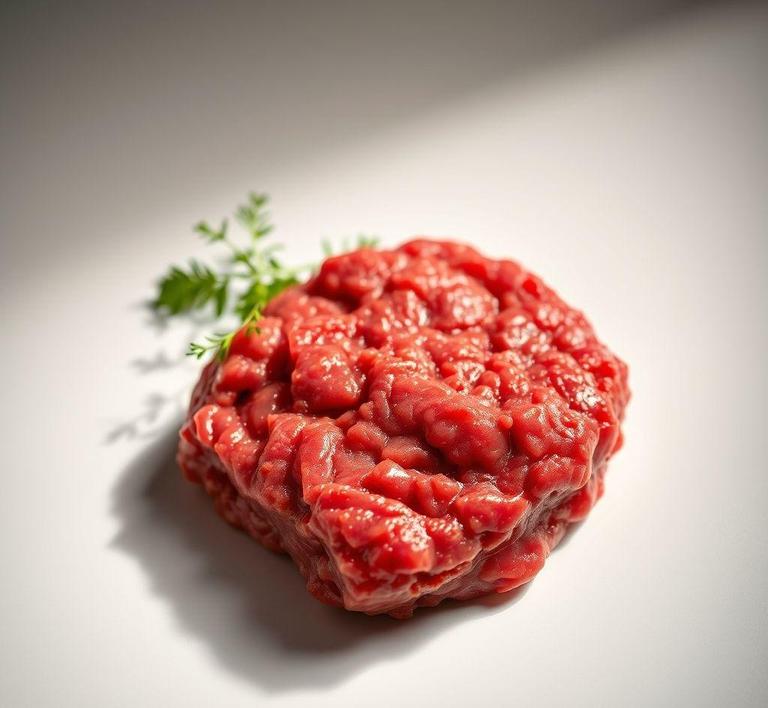When it comes to managing leftovers or just keeping your groceries fresh for longer, you might find yourself wondering, “Can I refreeze uncooked ground beef”? The answer is yes, but with some important considerations. Refreezing uncooked ground beef is possible if done the right way, but it’s all about safety and quality. Whether you’ve thawed it out and don’t need it all or simply want to extend its shelf life, there are steps to take that’ll ensure the meat stays safe to eat and doesn’t lose its taste or texture. In this guide, we’ll walk you through everything you need to know, from the best methods of freezing to when it’s okay to refreeze ground beef again.
Can You Refreeze Uncooked Ground Beef?

Refreezing uncooked ground beef is a common question that many home cooks and food enthusiasts ponder, especially when it comes to preventing food waste and maintaining a well-stocked freezer. The answer, however, is not entirely straightforward. In theory, you can refreeze uncooked ground beef, but there are a few important guidelines and safety considerations to keep in mind to ensure it remains safe to eat and maintains its quality.
Ground beef, like many other perishable foods, should only be frozen and thawed once under the right conditions. If ground beef has been thawed in the fridge or under controlled, safe temperatures, it can be refrozen within a specific timeframe. However, if it has been left out at room temperature for extended periods (more than 2 hours), or if it was defrosted in hot water or a microwave, it should not be refrozen. This is due to the risk of bacteria growth that occurs when meat sits in the "danger zone" (between 40°F and 140°F), which can lead to foodborne illness.
How To Refreeze Uncooked Ground Beef?
If you’ve decided to refreeze uncooked ground beef and the conditions are right, it’s essential to follow a few best practices to preserve its safety and quality. Here’s how to do it:
- Thaw the Beef Safely: If the beef is frozen, it should first be thawed properly in the refrigerator. This is the safest method because it allows the meat to thaw evenly and remain at a safe temperature. Never thaw ground beef on the countertop or in warm water, as this can encourage bacterial growth.
- Assess the Quality: After thawing, examine the ground beef to ensure it hasn’t been sitting out for too long or started to develop an off smell. If it looks, smells, or feels strange, it’s better to discard it to avoid foodborne illness.
- Refreeze Immediately: Once you’ve ensured that the ground beef is safe to refreeze, you should do so as quickly as possible. This minimizes the time it spends at unsafe temperatures and reduces the likelihood of bacteria multiplying. Use airtight packaging or freezer bags to prevent freezer burn and maintain the quality of the meat.
- Portion the Beef: If you know you won’t use all the refrozen ground beef at once, it’s a good idea to divide it into portions before freezing. This way, you only thaw what you need and avoid repeatedly freezing and thawing the same portion.
- Label and Date: It’s essential to label and date the beef before placing it back in the freezer. This helps you keep track of how long it’s been frozen and ensures that you use it within an appropriate timeframe (ideally within 3 to 4 months for the best quality).
Quality Impact
While refreezing uncooked ground beef is technically safe when done correctly, it can have a noticeable impact on its quality. Freezing and thawing cause the meat’s cell structure to break down. As a result, when the beef is refrozen, it may lose some of its texture and flavor. Here are some specific ways refreezing ground beef can affect its quality:
- Texture Changes: The moisture lost during freezing may cause the meat to become slightly dry or more crumbly after refreezing. This is particularly true with ground beef, as it has a high surface area. When thawed again, you might notice a difference in how it cooks up, with a potentially less juicy or tender result.
- Flavor Deterioration: While the flavor won’t necessarily become unsafe, refreezing ground beef can cause a mild reduction in its overall taste. The extended freezing process may lead to subtle flavor degradation due to oxidation and freezer burn, though proper packaging can reduce this.
- Loss of Nutrients: While refreezing doesn’t strip ground beef of its nutrients entirely, repeated freezing and thawing can cause some loss of vitamins, particularly those that are more heat-sensitive, like certain B vitamins. However, the nutrient loss is generally minimal when done properly.
- Freezer Burn Risk: If the beef isn’t tightly sealed, refreezing can expose it to freezer burn, which leads to dry, discolored patches on the meat. While freezer-burned meat is still safe to eat, it may be unappealing and have a different texture, so it’s important to use high-quality, airtight packaging.
You can refreeze uncooked ground beef, but it comes with a few key conditions that need to be adhered to in order to maintain both its safety and quality. Thawing and refreezing ground beef multiple times can cause texture and flavor degradation, so it’s best to limit how often you put the meat through these cycles. As long as the beef has been safely thawed in the refrigerator and handled with care throughout the process, refreezing is an acceptable method for extending its shelf life and avoiding waste.
That said, if you’re unsure about how many times to refreeze your ground beef or whether it has been left out too long, it’s safer to err on the side of caution and not take the risk. Refreezing is a useful tool in food preservation, but it’s important to always prioritize food safety and quality.
Is It Safe To Refreeze Uncooked Ground Beef?
The question of whether it’s safe to refreeze uncooked ground beef is one that many home cooks, grocery shoppers, and even chefs have pondered. Ground beef, like all meats, has specific handling guidelines to ensure safety and quality. The general rule when it comes to refreezing uncooked ground beef is nuanced: yes, you can refreeze it under certain conditions, but no, it’s not always a good idea if certain factors aren’t carefully considered.
The safety of refreezing ground beef primarily depends on how it was thawed in the first place. If the beef has been thawed in the refrigerator, then you are generally safe to refreeze it, as long as it hasn’t been left at room temperature for more than two hours. Thawing meat in the refrigerator keeps it at a safe temperature, so harmful bacteria don’t have a chance to grow. If it was thawed using other methods, such as in the microwave or under running cold water, the situation changes. These methods can cause the meat to reach temperatures in the ‘danger zone’ (40°F to 140°F), where bacteria multiply rapidly, and thus, refreezing becomes risky.
However, while it’s technically safe to refreeze ground beef that was properly thawed, the quality of the meat will deteriorate with each freezing and thawing cycle. The more times the beef is frozen and thawed, the more likely it will develop a dry, tough texture due to the ice crystals that form and damage the meat’s fibers. So while safety can be ensured with careful handling, quality must be weighed carefully before opting to refreeze.
Signs That Uncooked Ground Beef Should Not Be Refrozen
There are several signs to look for when determining if uncooked ground beef is no longer safe to refreeze. These signs often have to do with how the beef has been stored, how long it has been out of the freezer, and how it appears visually and smells:
- Off-Smell: One of the most obvious signs that ground beef should not be refrozen is if it has a sour, pungent, or rancid odor. Fresh ground beef has a light, metallic smell that is barely noticeable. If it starts to develop a rotten or ammonia-like smell, discard it immediately.
- Color Changes: Fresh ground beef is typically bright red or pink in color. As it begins to age, it may turn darker brown or gray, particularly in the areas exposed to air. While color changes don’t necessarily indicate spoilage, they can be a sign that the meat is past its prime. If the beef is mostly brown or gray throughout, it may be best not to refreeze it.
- Slime or Slimy Texture: If the surface of the ground beef becomes slippery, sticky, or slimy, this is an indicator of bacterial growth. Slime can form when the meat has been exposed to air for too long, especially if left at room temperature for extended periods. Any sign of slime on the surface means that the meat should be discarded, not refrozen.
- Improper Storage: If the meat was thawed at room temperature (or for too long), or if it’s been left out for more than two hours, it’s no longer safe to refreeze. The USDA recommends that meat should never be left at room temperature for more than two hours, or one hour if the temperature is above 90°F.
- Frozen Too Long: Even if it hasn’t spoiled, ground beef that has been in the freezer for more than six months is likely to have a loss in flavor and texture. While refreezing may still be safe, the beef won’t perform well in terms of cooking quality.
Common Refreezing Mistakes
When it comes to refreezing uncooked ground beef, there are several mistakes that people commonly make, which can lead to either food safety risks or a poor culinary outcome. Here are some of the most common ones:
- Refreezing After Thawing on the Counter: One of the most dangerous mistakes is thawing ground beef on the counter and then refreezing it. Thawing at room temperature can lead to the rapid growth of bacteria, even if the beef is only at room temperature for an hour or two. Once this happens, refreezing does not eliminate the risks, and harmful pathogens can still cause foodborne illness.
- Refreezing Multiple Times: Another common error is repeatedly freezing and thawing meat. Every time ground beef is frozen and thawed, it loses moisture, which leads to a dry, tough texture. Multiple freezing cycles can also affect the flavor and overall palatability of the beef. In the case of refreezing, it’s best to only do so once.
- Not Using an Airtight Container: When refreezing ground beef, it’s crucial to store it properly. Using a plastic bag, vacuum-sealed pouch, or airtight container prevents freezer burn. If ground beef is exposed to air during freezing, it can become dried out, discolored, and lose its flavor and texture. Many people make the mistake of simply placing it back in the original packaging, which may not be ideal for long-term storage.
- Not Labeling the Beef: Without labeling the meat with the date it was frozen, you might not know how long it has been in the freezer, which can affect quality. This mistake is easy to avoid with just a marker and a piece of masking tape. If the beef is refrozen multiple times, keeping track of the freezing dates helps ensure that the meat is used within a safe time frame.
Tips And Tricks
If you plan to refreeze uncooked ground beef, here are some tips and tricks to help preserve the safety and quality of the meat:
- Use the Refrigerator to Thaw: Always thaw ground beef in the refrigerator, not at room temperature. If you have more time, consider allowing the beef to thaw overnight. If you’re in a rush, the microwave can be used, but be sure to cook the beef immediately afterward if you use this method.
- Portion the Beef: Instead of freezing large portions of ground beef, divide it into smaller portions before freezing. This makes it easier to defrost only what you need, reducing the chances of needing to refreeze the meat.
- Label and Date Everything: Label each package of ground beef with the date you froze it, so you can track how long it’s been in the freezer. This helps prevent using old or freezer-burned meat.
- Vacuum Seal for Better Quality: If you’re serious about refreezing beef (or other meats), investing in a vacuum sealer can make a huge difference. Vacuum-sealing keeps air out and prevents freezer burn. It also extends the overall shelf life of the meat.
- Don’t Refreeze Meat After Cooking: Refreezing cooked ground beef is generally considered safe, but the texture and flavor will change after multiple freezing cycles. Ideally, if you have leftover cooked beef, you should consume it within a few months.
- Check Temperature Regularly: If you don’t have a thermometer in your freezer, consider purchasing one. Keeping your freezer at a steady 0°F (or lower) ensures that the beef stays in a safe, frozen state without temperature fluctuations that could lead to bacterial growth.
Conclusion
Refreezing uncooked ground beef is a topic with many variables to consider. Safety comes down to how the beef is handled before refreezing, particularly when it comes to thawing and the overall duration of time it’s been out of the freezer. As long as the beef hasn’t been thawed improperly and has been handled with care, it can safely be refrozen once. However, it’s important to remember that the more times ground beef is frozen and thawed, the more it will degrade in texture, moisture, and flavor.
To ensure safety and maintain the quality of the beef, make sure you follow proper storage and handling techniques, such as thawing beef in the refrigerator, portioning it before freezing, and using airtight packaging to prevent freezer burn. By being mindful of these guidelines, you can refreeze your ground beef with minimal risk to both your health and the final taste of your meals.


